The Ultimate Guide for How to Organize Your Desk
From chaos to calm: how to organize your desk for peak productivity
I’m the classic career-with-a-side-hustle archetype: writing full-time for Avery and also running a small hobby business. I know from experience that keeping my desk organized is essential. What’s more, finding practical desk organization ideas can make all the difference. Let’s face it: as a small business owner, you’re never truly off the clock. Even if you have the luxury of a dedicated office space, you take your work home because it’s your passion. If, like me, you run your business primarily from home, a clutter-free workspace becomes even more important.
A tidy desk not only boosts efficiency but also helps keep your home calm and welcoming. In fact, incorporating simple desk organization ideas into your routine can make a big difference. When you organize your desk better, you’ll improve productivity and feel more at ease. This, in turn, creates a space that allows you to focus and do your best work. Even simple changes, like sorting paperwork into folders or using vertical desk storage, can transform your workspace.
Explore the best desk organization ideas in this article
Let’s get started with 7 actionable tips to help you organize your desk and keep it that way long-term:
- Sort and store active paperwork with a system
- Use portable storage for a flexible workspace
- Regularly archive old paperwork and files
- Use pegboard to organize vertical desk space
- Try creative, easy-access sticker and label storage
- Keep packing and shipping supplies within reach
- Stop waiting: Simple steps to organize your desk today
Why is it important to organize your desk?
Boost your focus and efficiency
When my desk is organized, I feel more focused and less overwhelmed. And there’s plenty of research that shows I’m not alone. Consider this 2023 paper published in the International Journal of Research Publication and Reviews, for example. There’s also this fantastic article on verywellmind.com that draws the connection between de-cluttering and mental health. Personally, I practice the Pomodoro® Technique to stay focused. First, allow me to explain what it is in at a very basic level. Then, I will show you why keeping my desk clutter-free helps. Essentially, you set a timer to focus on one task for 25 minutes without distractions. Then, you set a 15-minute timer to attend to things that are important, but might distract you. For me that means incoming emails and message. Then repeat until you need a true break (about every 2 hours).
Keeping my desk organized makes it quicker and easier for me to switch between tasks for each time block so I can work more efficiently. Here’s a direct example of how this can look while I’m doing work for my small business. I might start my first 25-minute block sculpting horns for costume headpieces. Then I’ll use my laptop to respond to social media messages and schedule posts for 15 minutes. If my desk is messy, it’s too difficult to switch between tasks because it takes longer to find the supplies I need than to actually get anything done. However, by implementing smart desk organization ideas I save time and stay focused on each task at hand.
Make cleaning your desk easier
Clutter doesn’t just impact your productivity—it also makes it harder to keep your workspace clean and germ-free. And if you think regular cleaning and disinfecting aren’t necessary, think again. Research shows that the average desk harbors more bacteria than you might expect. According to Dr. Charles Gerba from the University of Arizona, (referenced in this National Library of Medicine article) the average desk can have over 10 million bacteria on it—400 times more than what’s found on a typical truck stop toilet seat!
Naturally, keeping your desk organized makes cleaning quicker and more efficient because it’s easier to wipe down surfaces that aren’t cluttered. In this way, incorporating desk organization ideas into your setup allows you to protect your health and keep your workspace inviting.
7 actionable tips for how to organize your desk
1) Sort and store active paperwork with a system
To keep your desk organized, it’s essential to give everything a designated place. At a minimum, make sure you have storage for incoming, outgoing, and high-priority paperwork right on your desk. You might also want extra storage for active paperwork, especially receipts. Like many small business owners, organizing business receipts is essential for me because I will need to write off those expenses come tax season. For example, a letter tray or desktop file organizer can help you take advantage of vertical space while keeping important documents within reach. And this is where labels come in—remember I told you there would be a lot of labeling!
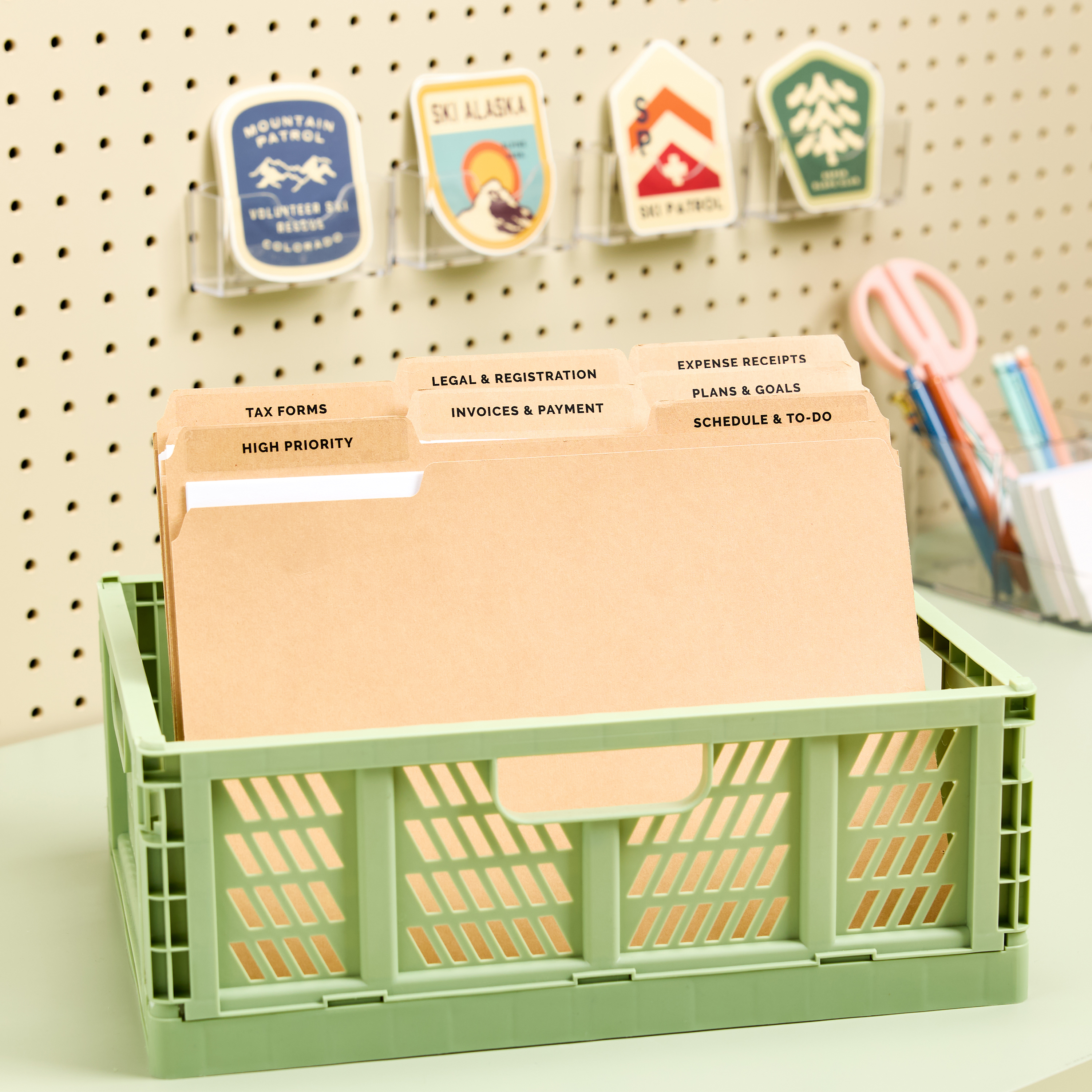
Avery 5029 are my go-to clear file folder labels. The glossy clear material gives a “printed on” look that I really like. You can also get the same size labels in a a huge variety of materials when you buy labels by the sheet.
Need help? Check out our guide for how to make file folder labels.
Of course, you have to live with the labels you use to organize your desk, so if you’re like me, you want them to look good. I use Avery Design and Print Online (ADPO) to customize all my labels online because I can even use it on my phone. Once they’re customized the way I want, I prefer to use Avery WePrint® to order them custom printed, but you can easily print them at home too!
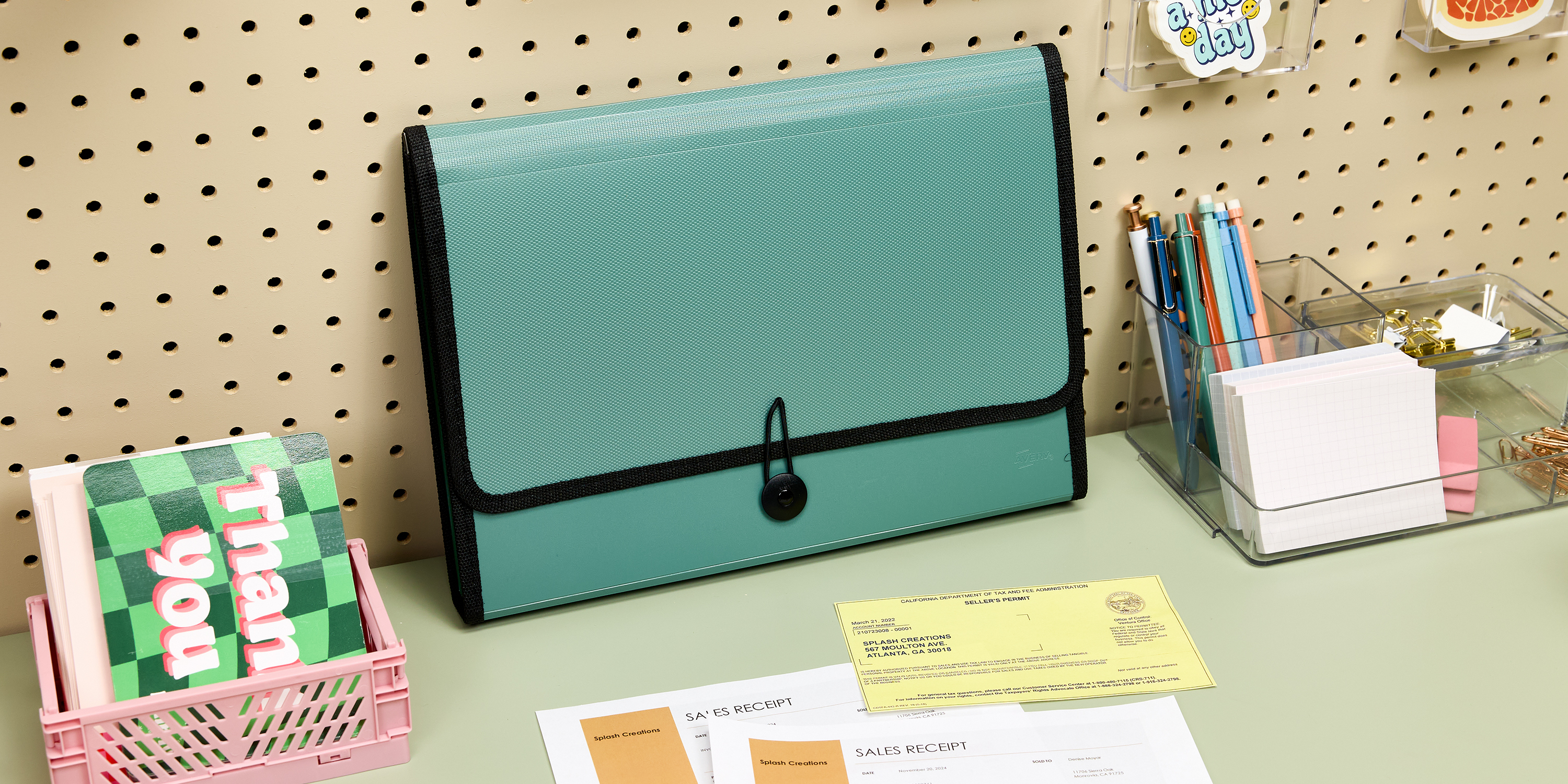
2) Use portable storage for a flexible workspace
As a small business owner, your workday likely doesn’t always happen in one location—mine surely doesn’t. I’m often juggling crafting at home, shopping for supplies, and selling in person at various locations. When thinking about how to organize your desk, it’s important to consider the portable nature of your workspace. It’s so easy to create a messy stack of papers when you’re shuffling work between your desk and your travel bag. To keep everything tidy, especially when documents and supplies need to move with you, portable storage options can make all the difference. For example, I find Avery accordion file organizers, like this one in sage green, super helpful.
Here are a few examples of paperwork that move around with me:
- Order forms: For tracking customer purchases, especially when taking commissions in person or at markets.
- Receipts: To keep a record of cash sales and expenses.
- Material lists: For quick reference when shopping for wholesale supplies.
- Price lists and promotional flyers: For sharing with potential customers at pop-up shops or events.
- Laminated booth signs. For displaying prices, sales, special offers, and accepted payment methods as well as QR codes to my Venmo, PayPal, and Instagram, etc.
3) Regularly archive old paperwork and files
There are, of course, important business papers that accumulate frequently, maybe even daily, but need to be saved for extended periods of time. For me, these are mainly tax documents and receipts. If I kept every expense receipt from the entire year on my desk it would be nothing but receipts! Additionally, the IRS says you need to keep your tax return records for three years. All that paperwork simply cannot live on top of your desk if you want it to stay organized. The solution is to archive paperwork and files on a regular basis.
Sure, it’s tempting to let those papers or folders pile up on your desk, but you’re much better off archiving them in a dedicated filing cabinet or drawer. Neatly labeling your file folders and indexing hanging file folders in your filing cabinet is essential. This is because you can easily see where different kinds of paperwork go and that makes it easier to quickly put them in the right place. To make it even easier, I also use color-coding for a quick visual cue. For indexing I love these Avery 16219 self-adhesive index tabs in assorted colors and Avery 5266 file folder labels for color coding individual folders.
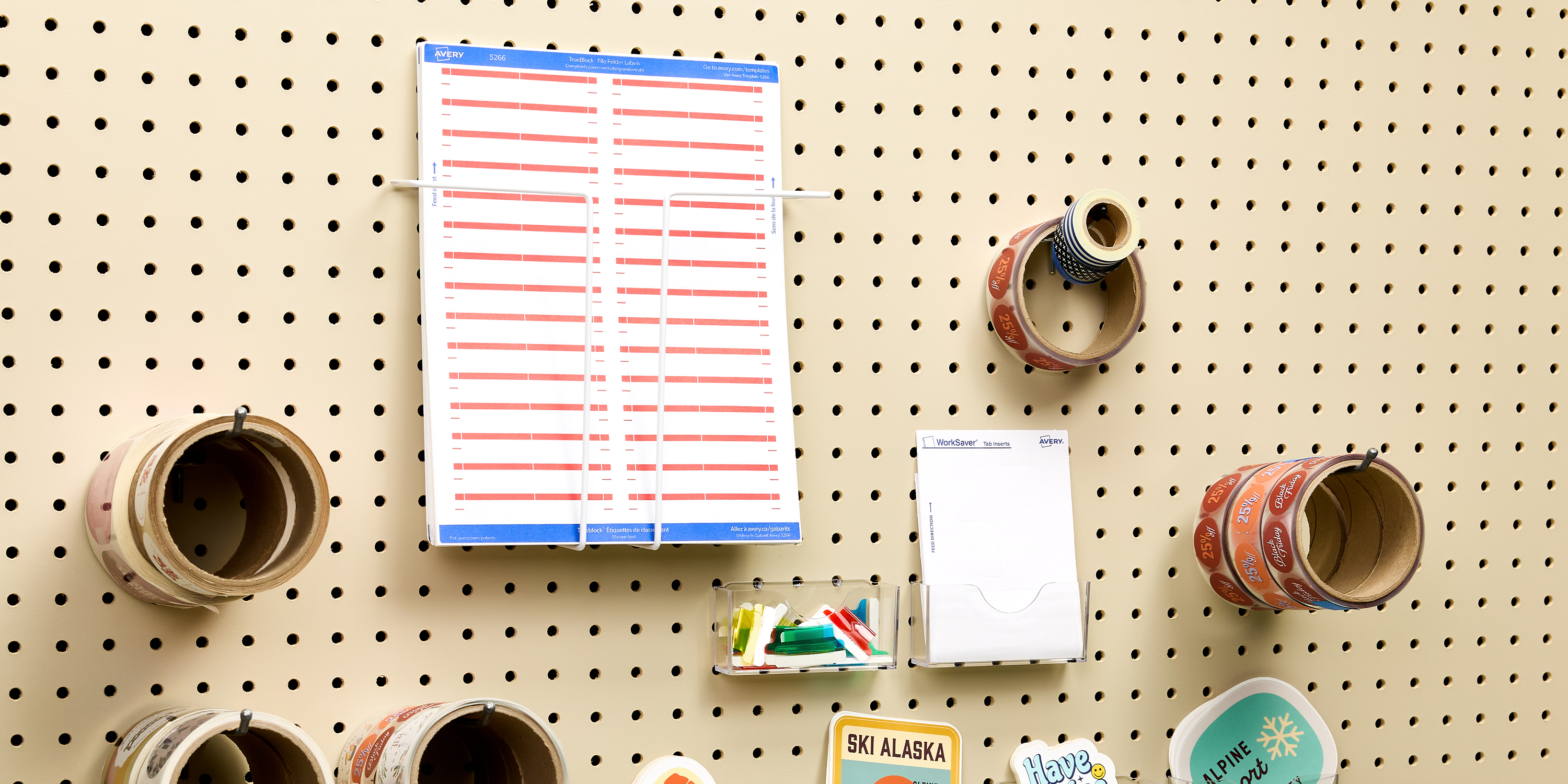
4) Use pegboard to organize vertical desk space
Consider pegboards as one of the most versatile desk organization ideas for maximizing vertical space. Vertical space is often overlooked when it comes to organizing a desk. Instead, we let everything that doesn’t work go into a drawer or pile up on our desktop. One way to help you clear the clutter is to set up a pegboard above your desk.
Because my side-hustle business is all about crafting, I use pegboard for storing essentials that need to be easily accessible yet out of the way. Think of tools like scissors, rulers, and craft knives that can be hung for quick access. Small baskets or bins clipped to the pegboard can hold items like spools of thread, measuring tapes, or even small paint bottles. I personally love hooks that can hold rolls of ribbon, tape, and especially roll labels and stickers. With the right setup, a pegboard not only keeps these essentials organized but also transforms your workspace into an inspiring and efficient area tailored to your creative needs.
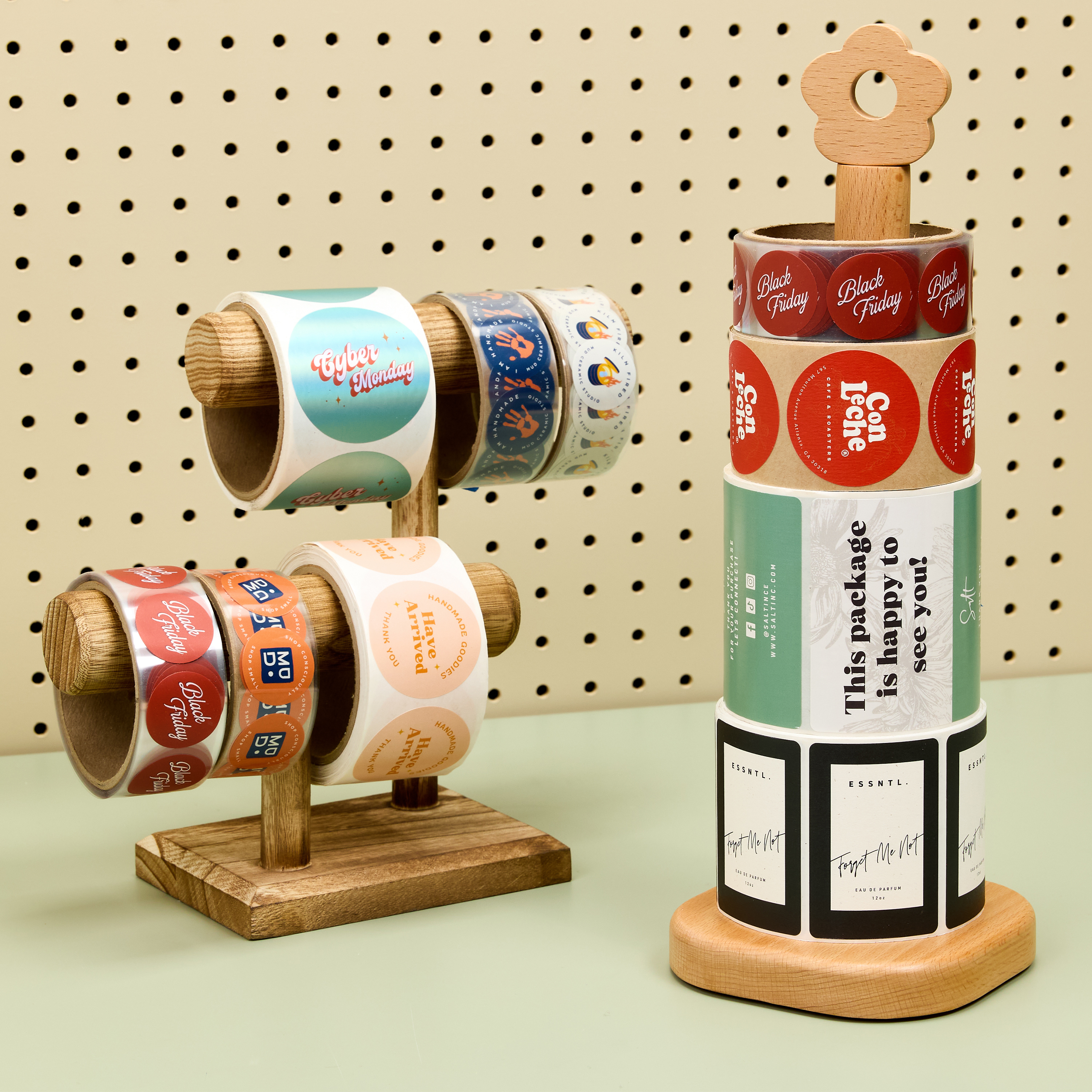
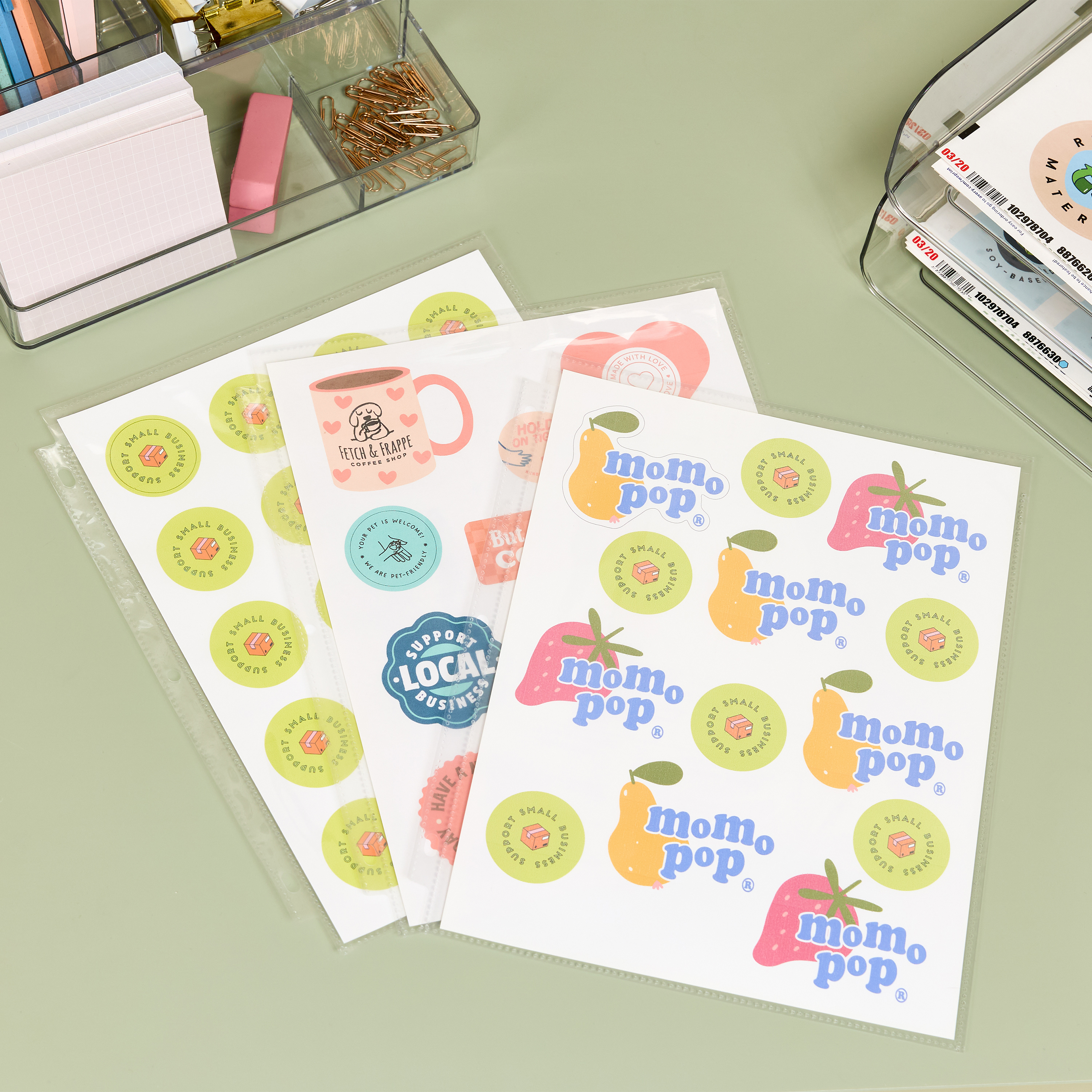
5) Try creative, easy-access sticker and label storage
Keeping your stickers and labels organized is essential for a professional look and ensures they’re ready to use when you need them. Since my business is a small, one-woman operation, I’m always looking for simple, budget-friendly label storage solutions that help keep my workspace neat. When considering how to organize your desk, think about options like file racks, paper towel holders, or even shoe cubbies—these are all affordable, space-saving tools that keep labels and stickers easily accessible. For roll label storage, shelving with individual cubbies works especially well because it prevents rolls from being stacked for too long. One of my favorite tricks is using a paper towel holder as a roll label dispenser—perfect for tight spaces!
When planning label storage for sheets, consider file racks, tiered document trays, or mail cubbies, which are ideal for organizing them flat and keeping them ready for use. To keep individual sheets in top condition, try using sheet protectors like Avery 76000 to shield them from dust and moisture.
Extra label storage tips from label experts
Avery has a long history of stickers and labels going back to when Stan Avery invented the first sticker in 1935. Today, we carry on Stan’s legacy of innovation with a dedicated Research and Development (R&D) team. This team spends about five hours daily testing labels and stickers, so naturally, they had a lot to say about label storage. With these simple label storage tips, you’ll know exactly how to organize your desk to stay efficient and ready for any labeling task.
- Labels and stickers do best in a cool, dry environment (around 60-77ºF).
- Keep humidity levels between 35-65% for the best results.
- Leave labels in their packaging to avoid curling caused by humidity.
- Use older labels first to prevent waste.
- Store sheet labels flat to avoid curling.
6) Keep packing and shipping supplies within reach
To be super real with you, packing and shipping can only go one of two ways for me. It’s either a chaotic, stressful mess or a smooth, repetitive process that feels almost meditative. What makes the differences is keeping my supplies organized and within reach. Mailers, envelopes, tissue paper, labels, stickers, scissors, freebies, etc. get scattered very quickly if you’re not intentional about where they’re stored. Especially during busy times of the year like when I’m fulfilling holiday orders, things are stressful enough, there’s no need to make it worse! By creating a designated area for your shipping supplies, you’ll not only keep your desk tidy but also make packing orders faster, more efficient, and feel more calm.
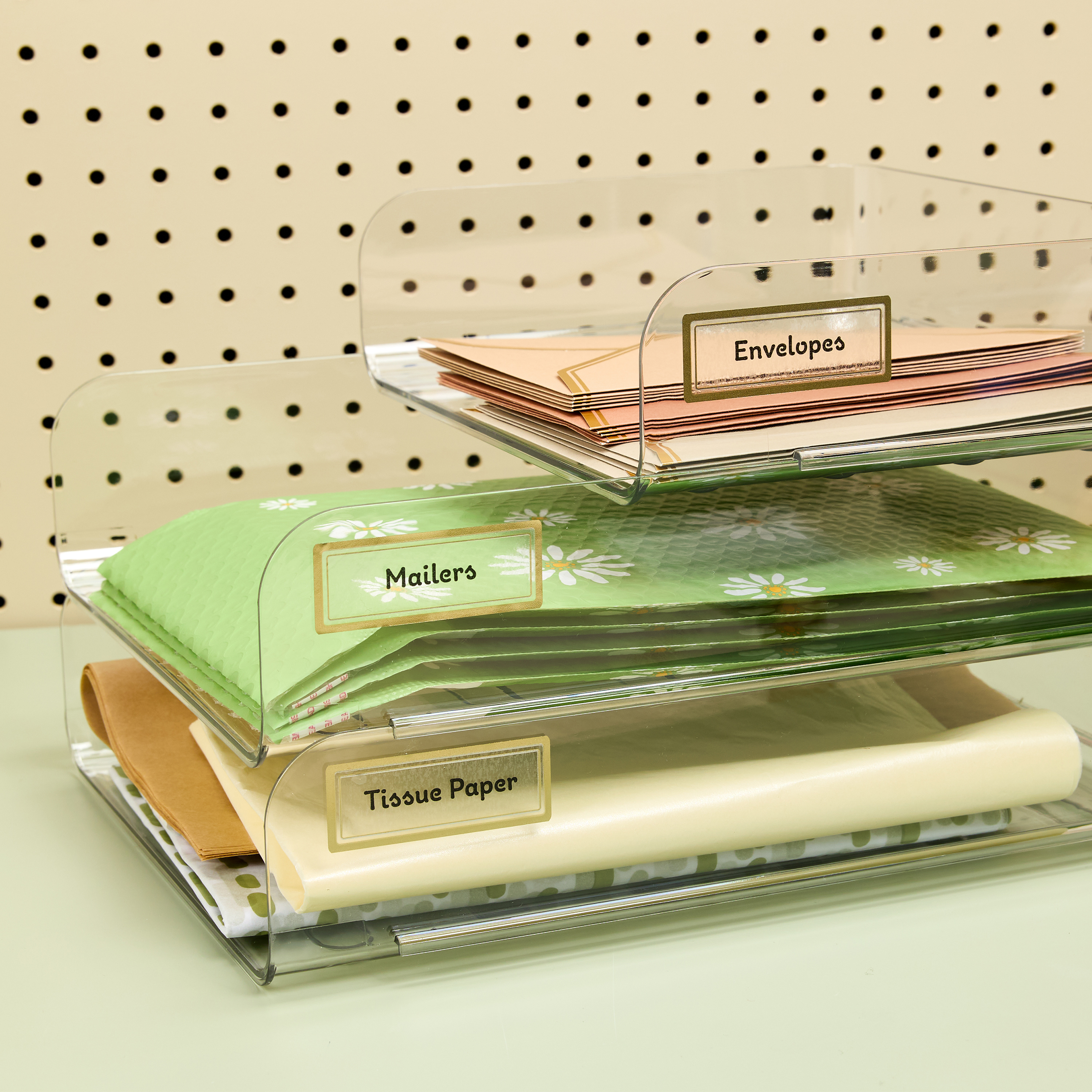
I am obsessed with Avery 6550 address labels for labeling clear, acrylic desktop storage. The gold border is so unique and they’re the same size as the iconic Avery 5160 address label (1″ x 2-5/8″).
Try glossy clear labels sold by the sheet to pick a size that matches your drawers perfectly. Or have them custom-printed. With either option you can order custom sizes for free!
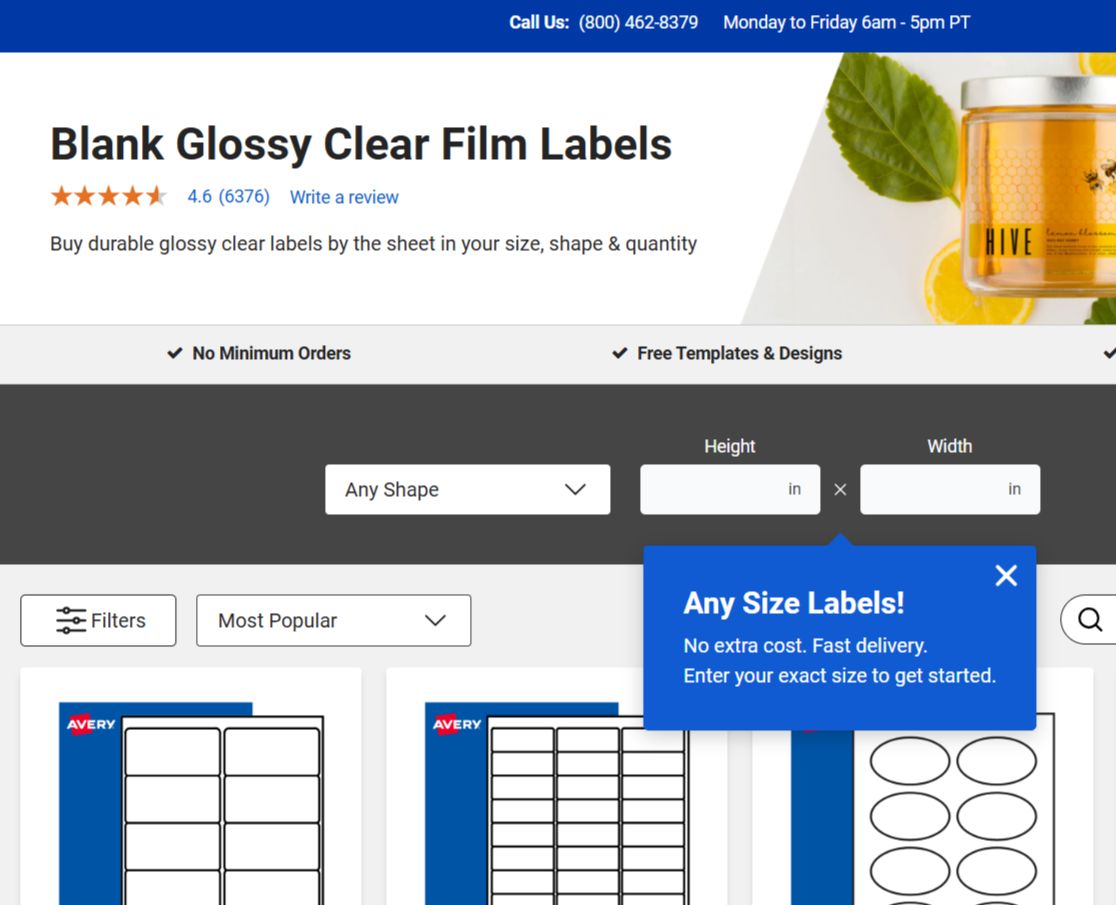
7) Stop waiting: Simple steps to organize your desk today
It’s so easy to say to yourself, “Oh, it doesn’t matter how my desk looks; I’ll worry about that later.” Or, “I can’t organize my desk now because I’m waiting until I can afford to redecorate my whole office.” How about this one: “I don’t know how to organize my desk, and I can’t waste time figuring out how.” There are many excuses, but I will tell you from my own experience: don’t wait. Get started now. There’s no need to be miserable and stressed out while you wait for some self-imposed milestone. Start making changes to feel good in your workspace so that you can do your best work and protect your mental well-being.
First just assess the supplies and decorative items on your desk. How often do you really use that dusty laminating machine? Transfer any items you don’t use regularly to drawer storage or remove them from your desk entirely. Next, answer: Do your decorations bring you joy, or have you outgrown them? Let go of décor that doesn’t make you happy to free up more desk space for items that brighten your day. You’ll be amazed at how much better your desk looks just by narrowing down objects to what you actually use and things that bring you joy.
Take action today: desk organization ideas to transform your workspace
Start your journey from chaos to calm by putting these desk organization ideas into action today. As I shared in this guide, I’ve experienced firsthand how even small changes can completely transform your workspace. With a bit of effort, you can create a desk that not only inspires creativity but also boosts productivity and keeps you focused on what truly matters.
Don’t wait for the “perfect” time to organize. Begin with one idea that resonates with you, and you’ll see how even the smallest steps can lead to meaningful results. Your clutter-free, productive workspace is within reach!
For more organization tips and inspiration, follow us on Instagram and TikTok check out our organization board on Pinterest.